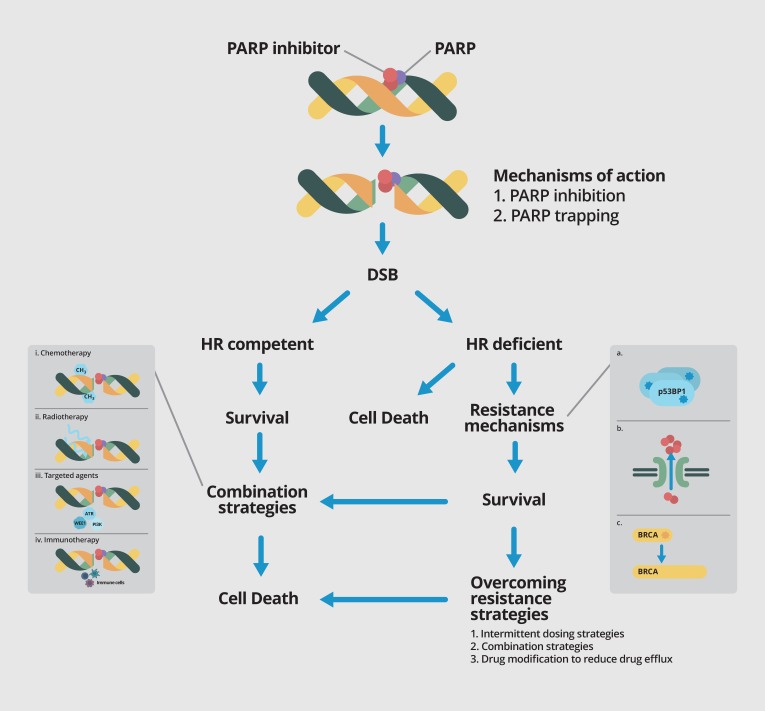Figure 1.
PARP inhibitors cause DNA DSB (double strand break) by via inhibition of PARP enzyme activity and PARP trapping. In HR (homologous recombination) competent tumors, tumor cells with intact homologous recombination repair will be able to survive. However, in BRCA1/2 mutant and other HR deficient cancers that are reliant on base-excision repair based on the PARP pathway, blockade of this pathway by PARP inhibition leads to synthetic lethality and cell death. Multiple resistance mechanisms against PARP inhibitors have been elucidated, including somatic mutations in p53BP1 (a); upregulation of drug efflux transporters such as PgP (b); and somatic mutations in BRCA gene leading to restoration of the open reading frame and thus BRCA function (c). Strategies to overcome resistance include intermittent dosing, combination strategies and drug modification to reduce drug efflux. Various combination strategies are currently underway to further exploit the role of PARP inhibitors, including combination with chemotherapy (i); radiation therapy (ii); targeted agents (iii) and immunotherapy (iv).

